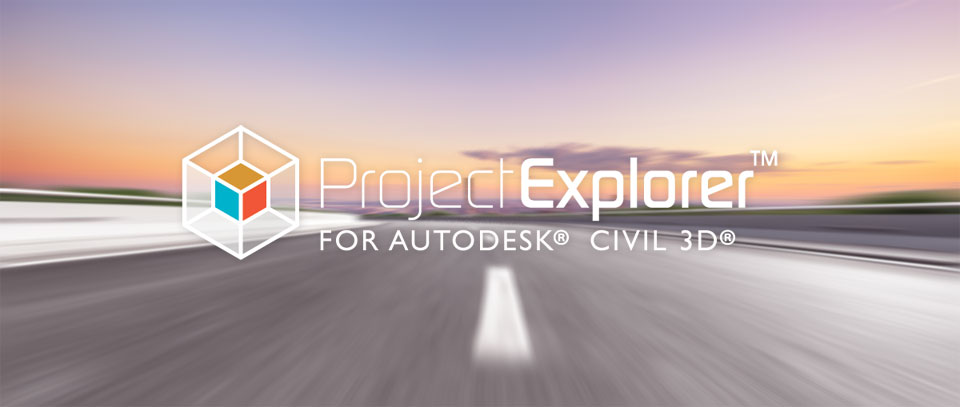ProjectExplorer for Autodesk Civil 3D
Get your FREE trial
Please provide your e-mail address to download your FREE 30-day trial.
ProjectExplorer 6 for Autodesk Civil 3D
User Guide | Introduction

User Guide
Introduction
Read our What's New? topic to discover key new features, bug fixes, known issues, and other changes in this release.
What is ProjectExplorer?
ProjectExplorer is an all-in-one hub for managing the contents of and extracting information from Civil 3D models. It helps users to review, validate, report, export and edit models in a way which is often more informative, efficient, and user configurable than plain Civil 3D.
Often regarded a more powerful alternative to the Civil 3D Prospector window, ProjectExplorer helps users to gain a better understanding of their design, and to more efficiently control the distribution of geometric information to project stakeholders.
Key Features
- ProjectExplorer features a tabbed user interface divided into object categories such as Alignments, Corridors and Pipe Networks. Each tab features a wide range of constantly updated information in both tabular and graphical formats. Content can be easily filtered, configured, and reviewed by the user - and many parameters can be edited directly from the ProjectExplorer window.
- ProjectExplorer includes arguably the most popular reporting solution on the market for Civil 3D users. Once configured, geometric reports can be exported to a range of popular file formats including Excel spreadsheets and PDF files with a single mouse click.
- Object Sets can hold persistent object selections for export to geometric reports, tables or other AutoCAD drawings. Updates can be applied to exported documents with a single mouse click when subsequent design changes are applied in Civil 3D. This feature greatly assists users in maintaining their Civil 3D models as "single sources of truth" for every project.
- ProjectExplorer is entirely style driven. This ensures that reports, AutoCAD tables, and the ProjectExplorer user interface itself can be easily configured to the requirements of each user, project, or organization.
- ProjectExplorer displays a range of warning tooltips for areas of the design which might not meet specified rules or design standards, or objects which may require further scrutiny. For example, pipes might be too long or short, or too deep or shallow; and profiles might have start/end stations which fall slightly beyond the station range of their host alignments. These scenarios, and many others, are far easier to spot in the ProjectExplorer window compared to plain Civil 3D.
- ProjectExplorer features a particularly wide array of tools for reviewing and editing pipe networks such as a multiple part swap tool and pipe run editor.
Prerequisites and Important Information
ProjectExplorer 6 supports Autodesk Civil 3D 2018, 2019 and 2020. Autodesk Civil 3D 2021 is supported from ProjectExplorer 6.1 onwards.
One or more of these supported host applications is required in order use this product.
In this ProjectExplorer release, file formats have not changed for Layout Styles, Table Styles, and Report Styles. Any of these styles created in earlier releases of ProjectExplorer are therefore fully compatible with this release.
The file format for Preferences Styles has changed in this release. Preferences styles created in earlier releases of ProjectExplorer are therefore not compatible with this release.
The license key format has not changed in this ProjectExplorer release. There is no requirement to reactivate your ProjectExplorer license with a new license key when upgrading to this release.
Tutorials
Browse our series of product tutorials to help get up to speed quickly with ProjectExplorer 6 for Autodesk Civil 3D .
Read moreInstallation and Licensing
ProjectExplorer 6 for Autodesk Civil 3D may be installed in standalone (node-locked) licensing mode, or (if your license agreement allows) in floating network licensing mode.
The licensing technology used in this product is entirely independent of your AutoCAD license. For a detailed series of installation and licensing topics, refer to our dedicated Installation & Licensing Guide.
Read more